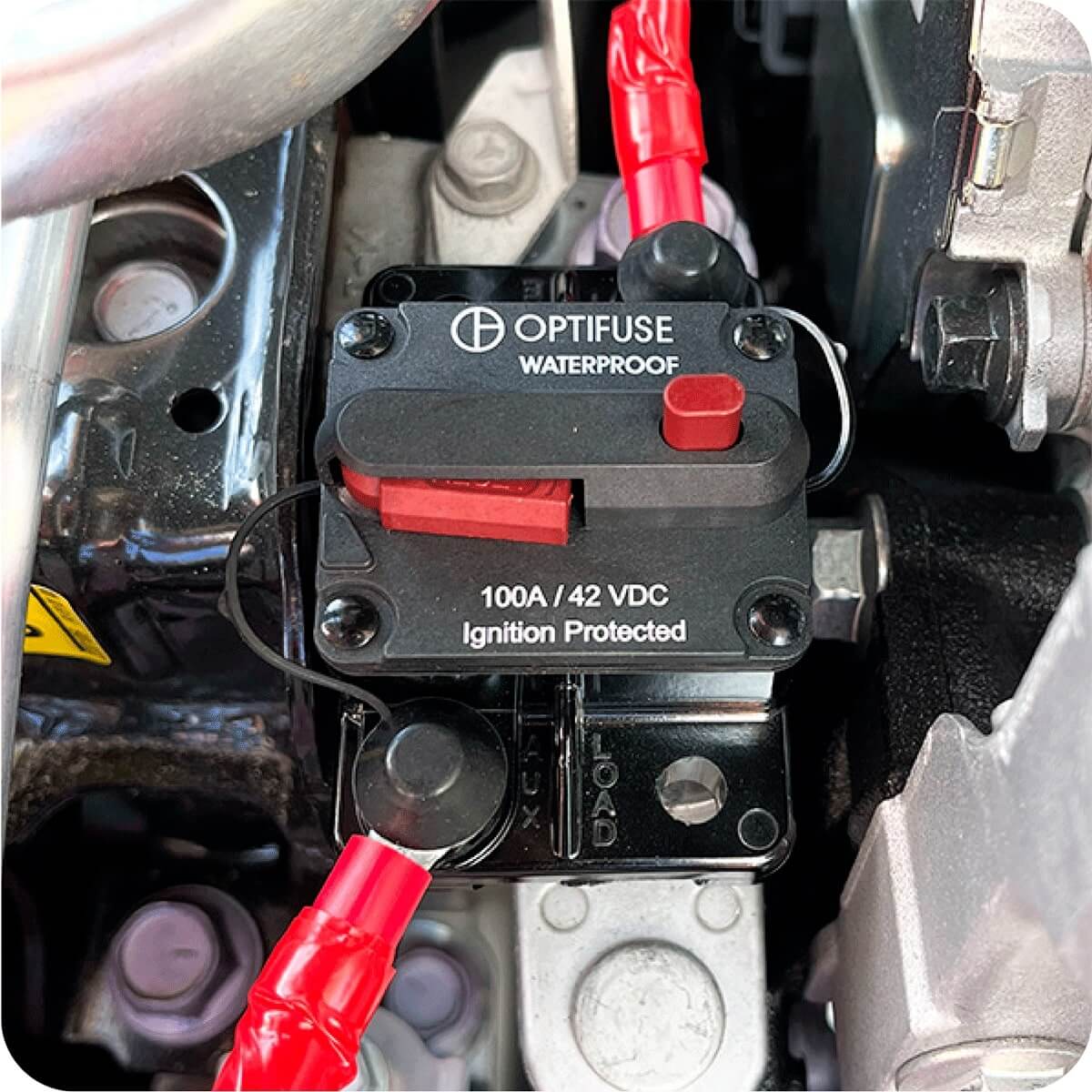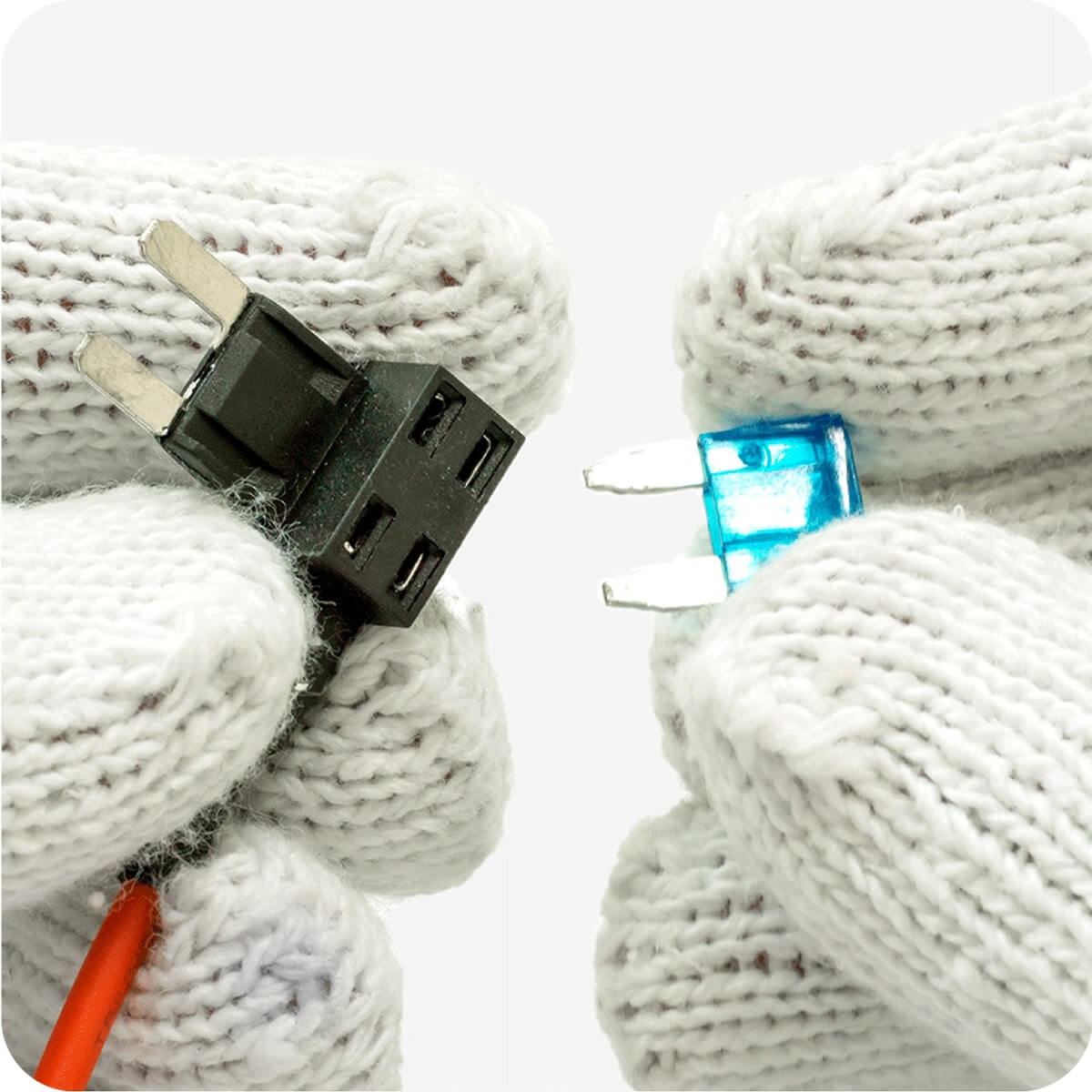Automotive bolt-on fuses manufacturer and distributor
Discover our selection of automotive bolt-on fuses
Bolt-on fuse: all you need to know
An automotive bolt-on fuse is a heavy-duty fuse designed for high-current circuits, typically found in trucks, buses, and industrial vehicles. It is mounted or "bolted" directly to a surface or terminal, providing a secure and reliable connection, and is ideal for protecting systems like batteries and motors in harsh, high-vibration environments.
Features and design of bolt-on fuses
- Easy installation and removal: Designed for straightforward mounting with bolts, providing a secure fit.
- Higher amperage ratings: Supports higher currents compared to smaller fuses.
- High voltage rating: Can support higher voltages compared to standard fuses, ensuring suitability for demanding electrical systems.
- High interrupting capacity: Some models can handle large fault currents, enhancing protection.
- Visual indication: Many offer a built-in feature to easily identify if the fuse has blown.
Common applications of bolt-on fuses
Automotive bolt-on fuses are primarily used in heavy-duty vehicles like trucks and buses, as well as in the marine industry, to protect high-current circuits. They often serve as the primary protective device immediately after the battery, safeguarding battery circuits from overcurrent. Additionally, they provide downstream protection for various electrical components, including alternators, motors, and other high-amperage systems.
Ratings of bolt-on fuses
Depending on the style of the fuse, OptiFuse bolt-on fuses range from 30A to 600A with voltage ratings of 32VDC, 58VDC, and 125VDC. Additionally, the interrupting ratings can range from 1000A to 10,000A, depending on style and voltage. To see the full range of OptiFuse bolt-on fuses, please visit the OptiFuse website and choose "Fuses" followed by "Automotive Bolt-On Fuses" from the top navigation menu.
FAQs
Are MEGA style fuses and MAXI style fuses the same thing?
No, MEGA style fuses and MAXI style fuses are not the same.
MEGA style fuses are designed for higher current applications, with ratings of up to 500A. They are bolt-on fuses, making them ideal for heavy-duty automotive applications.
MAXI style fuses, on the other hand, are rated for lower current applications, typically up to 100A. They are blade fuses that plug into a fuse holder or are installed in automotive fuse boxes.
These differences in amperage ratings, design, and applications highlight their distinct purposes.
What is the function of a limiter fuse?
The purpose of a limiter fuse is to protect electrical components and wiring from overloads and short circuit currents. Designed for higher current ratings, these fuses are commonly used for battery protection and in circuits with significant electrical demands, ensuring system safety and reliability.
What does the current rating of a fuse indicate?
The current rating of a fuse indicates the maximum amount of electrical current the fuse can safely carry before it blows or disconnects the circuit. This rating is crucial for ensuring that the fuse will protect the electrical system by interrupting the flow of current if it exceeds a safe level, thereby preventing damage to the circuit or potential hazards like overheating and fires.
What amp fuse should I use for my application?
Fuses should be sized to 135% of the full-load steady-state current of your circuit. If a fuse rating of 135% isn't available, use the next standard size up. For example, for a 10A circuit, calculate 10A * 135% = 13.5A. Since 13.5A is not a standard fuse size, you would use the next available size, which is 15A.
How is the mounting of these fuses performed?
The mounting of bolt-on fuses is typically performed using a corresponding fuse block or directly onto a battery stud. To mount the fuse with a fuse block, first remove the nut from the stud, then place the fuse onto the block, ensuring proper alignment. Next, attach the ring terminals on each side of the fuse and tighten the nut back onto the stud to secure the connection. In some cases, the fuse can be mounted directly onto a battery stud, following the same steps to ensure a reliable and stable connection for high demand applications.
Are these fuses resistant to vibrations and extreme conditions?
Yes, bolt-on fuses are designed to be resistant to vibrations and extreme conditions, making them suitable for harsh environments such as automotive and marine applications. Their robust construction and secure mounting methods help maintain stable connections, preventing loosening or failure due to vibrations.
OptiFuse bolt-on fuses typically operate within a temperature range of -40°C to 125°C. However, it is essential to consult the OptiFuse datasheet to ensure that the chosen fuse meets your specific environmental requirements. OptiFuse also recommends testing all components before installation to confirm proper functionality for your application.
See Also

Circuit Breakers
A comprehensive range of automotive, marine grade and line voltage circuit breakers to protect applications where resettability is needed.

Fuse Holders, Blocks and Accessories
Installing circuit protection is easy with our wide variety of customizable fuse holders, sturdy fuse blocks, and compact fuse clips.